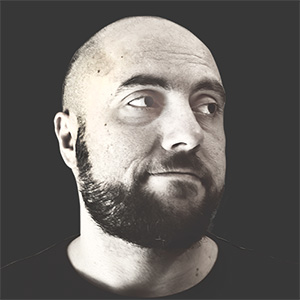The Evolution of Material Creation: Why PBR Changed Everything
Physically Based Rendering (PBR) has fundamentally transformed how we create materials for games. Gone are the days of guessing values and fighting inconsistent lighting. Today's PBR workflow provides a scientifically grounded approach that ensures materials look correct under any lighting condition, from the brightest sunlight to the darkest shadows.
This comprehensive guide will take you through the entire PBR pipeline, from understanding the core principles to implementing production-ready materials in modern game engines. Whether you're transitioning from traditional texturing methods or starting fresh, mastering this workflow will elevate the quality and consistency of your game assets.
Understanding PBR Fundamentals
Before diving into the practical workflow, it's essential to understand what makes PBR different from traditional texturing approaches.
The Physics Behind PBR
PBR is built on two fundamental principles:
- Energy Conservation: A surface never reflects more light than it receives. This means as a surface becomes more reflective, it must become less diffuse.
- Fresnel Reflections: All surfaces become more reflective at grazing angles. Even seemingly non-reflective materials like fabric or paper exhibit this behavior.
These principles are automatically handled by PBR shaders, freeing artists to focus on defining material properties rather than manually tweaking values for different lighting scenarios.
The Core PBR Maps
A complete PBR material typically consists of these essential texture maps:
- Base Color (Albedo): The pure color of the material without any lighting information
- Metallic: Defines whether a surface is metallic (white) or non-metallic (black)
- Roughness: Controls how rough (white) or smooth (black) the surface is
- Normal: Adds surface detail without additional geometry
- Ambient Occlusion: Provides contact shadows and crevice darkening
- Height/Displacement: Optional map for parallax effects or tessellation
Phase 1: Concept and Reference Gathering
Every successful PBR material starts with solid reference and clear goals.
Building Your Reference Library
Quality references are the foundation of accurate PBR materials:
- Real-world photography: Capture materials under multiple lighting conditions
- Cross-polarized photos: Remove specular reflections to see true base color
- Material samples: Physical samples help understand surface properties
- Technical specifications: Research real-world reflectance values
Analyzing Material Properties
Before creating any textures, analyze your reference to understand:
- Is the material uniform or does it have variations?
- What causes the surface roughness? Microscopic bumps, scratches, or coating?
- Are there multiple materials present (like rust on metal)?
- How does wear and tear affect the surface?
Phase 2: High-Poly Modeling and Sculpting
For complex materials with surface detail, the workflow often begins with high-poly modeling.
Sculpting Surface Detail
When creating detailed surfaces in ZBrush or similar tools:
- Primary forms: Establish major surface features
- Secondary detail: Add medium-scale elements like panels or large scratches
- Tertiary detail: Include fine surface texture and micro-details
- Surface noise: Apply subtle variation to break up uniformity
Preparing for Baking
Optimize your high-poly model for the baking process:
- Ensure clean topology without overlapping geometry
- Create appropriate UV layouts on your low-poly mesh
- Set up proper naming conventions for bake groups
- Test bake distances with a quick normal map pass
Phase 3: Texture Creation
This is where the PBR workflow truly shines, with each map serving a specific purpose in the material definition.
Creating the Base Color Map
The base color map requires special attention in PBR:
- Remove all lighting information: No shadows, highlights, or ambient occlusion
- Use measured values: Real-world albedo values rarely exceed 240 in sRGB
- Keep metals dark: Pure metals have very dark base colors (10-60 RGB)
- Add color variation: Subtle hue shifts make materials more believable
Metallic Map Best Practices
The metallic map is typically binary, but there are nuances:
- Pure values: Use 0 or 255, avoid mid-values unless simulating oxidation
- Transitional areas: Rust, dirt, or paint on metal should be non-metallic
- Consistent logic: If it conducts electricity, it's likely metallic
- Common mistakes: Painted metal is non-metallic, only exposed metal is metallic
Mastering the Roughness Map
Roughness is where materials gain their character:
- Observe real materials: Notice how roughness varies across surfaces
- Layer your approach: Start with base roughness, add wear patterns
- Environmental effects: Consider how water, dirt, and oils affect roughness
- Anisotropic considerations: Some engines support directional roughness
Normal Map Workflow
Creating effective normal maps for PBR:
- Bake from high-poly: Capture all sculpted detail
- Combine multiple sources: Blend baked normals with tiling detail normals
- Proper intensity: Avoid overly strong normals that break at grazing angles
- Format considerations: Use the correct normal map format for your engine
Ambient Occlusion Integration
AO in PBR requires a lighter touch than traditional workflows:
- Subtle application: Modern engines calculate real-time AO
- Cavity map usage: Use for micro-occlusion only
- Avoid double-darkening: Don't bake AO into base color
- Engine-specific needs: Some engines prefer AO in a separate channel
Phase 4: Texturing Software Workflow
Modern texturing software like Substance Painter has revolutionized PBR creation.
Substance Painter Workflow
Setting up an efficient Substance Painter project:
- Project configuration: Choose the appropriate template (PBR Metal/Rough)
- Mesh maps baking: Bake all utility maps with proper settings
- Layer organization: Use folders and smart masks effectively
- Smart materials: Create reusable materials for consistency
Procedural vs Hand-Painted
Finding the right balance:
- Procedural advantages: Non-destructive, resolution independent, easily adjustable
- Hand-painted details: Specific wear, unique characteristics, artistic control
- Hybrid approach: Use procedurals as base, hand-paint specific details
- Performance considerations: Bake procedurals for game engine use
Phase 5: Material Optimization
Creating beautiful materials is only half the battle – they must also perform well.
Texture Resolution Guidelines
Choose appropriate resolutions based on usage:
- Hero assets: 2048x2048 or 4096x4096 for primary focus objects
- Standard props: 1024x1024 for most game objects
- Background elements: 512x512 for distant or small objects
- Tiling textures: Higher resolution due to screen coverage
Channel Packing Strategies
Optimize texture memory through intelligent packing:
- Standard packing: RGB = Base Color, A = Unused or Alpha
- ORM packing: R = Occlusion, G = Roughness, B = Metallic
- Custom packing: Engine-specific optimizations
- Compression awareness: Understand how packing affects compression
Texture Compression Formats
Choose the right compression for each map type:
- Base Color: BC1/DXT1 for opaque, BC3/DXT5 for alpha
- Normal Maps: BC5 for best quality, BC1 for size optimization
- ORM Maps: BC7 for quality, BC1 for performance
- Platform specific: ASTC for mobile, BC formats for PC/console
Phase 6: Engine Implementation
The final step is bringing your materials into the game engine with proper setup.
Unity Implementation
Setting up PBR materials in Unity:
- Shader selection: Use Standard shader or URP/HDRP Lit shader
- Texture import settings: Disable sRGB for metallic/roughness/normal
- Material setup: Assign maps to appropriate slots
- Optimization: Enable GPU instancing for repeated materials
Unity-specific considerations:
- Unity uses smoothness instead of roughness (invert your map)
- Metallic and smoothness often packed together
- Normal maps require 'Normal Map' texture type
- Use texture streaming for large textures
Unreal Engine Implementation
Implementing PBR in Unreal Engine:
- Material creation: Create new material with appropriate parent
- Texture setup: Import with correct compression settings
- Parameter configuration: Set up material instances for variations
- LOD setup: Configure texture LODs for distance
Unreal-specific features:
- Material instancing for efficient variations
- Texture parameter controls for runtime adjustments
- Advanced features like parallax occlusion mapping
- Material layers for complex blending
Phase 7: Quality Assurance and Testing
Validating your PBR materials ensures consistency across all lighting conditions.
Testing Methodology
Comprehensive testing approach:
- Lighting validation: Test under various lighting intensities and colors
- Environment testing: Verify appearance in different scenes
- Platform testing: Ensure materials work across target platforms
- Performance profiling: Monitor texture memory and shader cost
Common PBR Mistakes to Avoid
Learn from common pitfalls:
- Too bright albedo: Real materials are darker than you think
- Incorrect metal values: Painted or coated metals aren't metallic
- Uniform roughness: Real surfaces have roughness variation
- Missing AO: Even subtle AO improves material grounding
- Normal map intensity: Over-strong normals break the illusion
Advanced PBR Techniques
Take your materials to the next level with advanced techniques.
Material Layering
Creating complex, realistic surfaces:
- Base material definition
- Wear and damage layers
- Environmental effects (dust, water, snow)
- Dynamic blending based on world position or vertex painting
Subsurface Scattering
For materials like skin, wax, or vegetation:
- Understanding subsurface behavior
- Setting up SSS in different engines
- Balancing quality vs performance
- Thickness map creation
Clear Coat and Multi-Layer Materials
Advanced material models for automotive and complex surfaces:
- Clear coat setup for car paint
- Multi-layer material architecture
- Performance implications
- Engine-specific implementations
PBR Workflow Automation
Streamline your pipeline for production efficiency.
Batch Processing Setup
Automate repetitive tasks:
- Texture export automation: Script batch exports from Substance
- Channel packing scripts: Automate ORM map creation
- Naming conventions: Establish and enforce standards
- Version control integration: Set up proper file management
Material Library Development
Build reusable material systems:
- Create base material templates
- Develop smart materials for common surfaces
- Document material parameters and usage
- Share libraries across team members
Conclusion: Mastering the Complete Pipeline
The PBR workflow represents a fundamental shift in how we approach material creation for games. By understanding the physics, mastering the tools, and following a structured pipeline, you can create materials that are not only visually stunning but also consistent and optimized for real-time rendering.
Remember that PBR is both technical and artistic. While the workflow provides scientific accuracy, your artistic eye determines how to use these tools to support your game's visual direction. Whether creating realistic materials or stylized surfaces, PBR gives you the foundation to achieve consistent, high-quality results.
As you implement this workflow, start with simple materials and gradually increase complexity. Build your library of references, smart materials, and tested solutions. Most importantly, always validate your materials in the target engine under various lighting conditions – because that's where your players will experience them.








